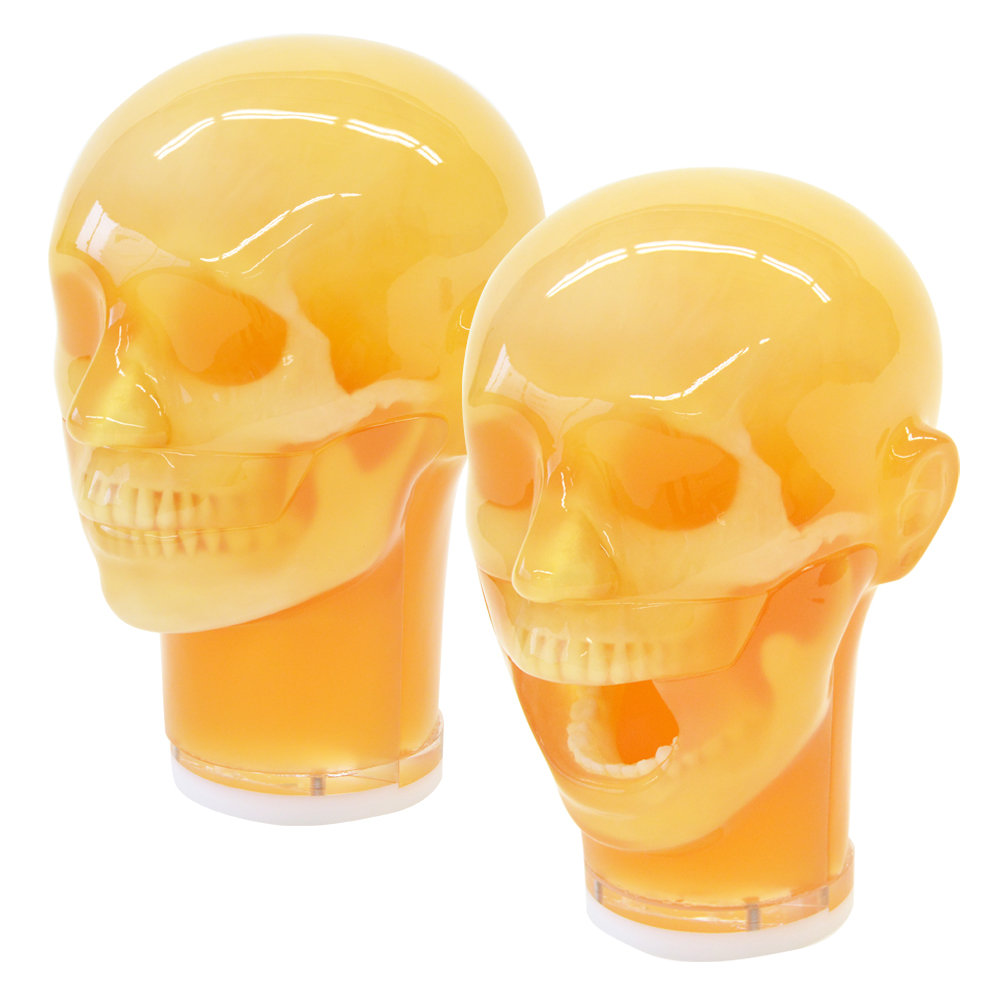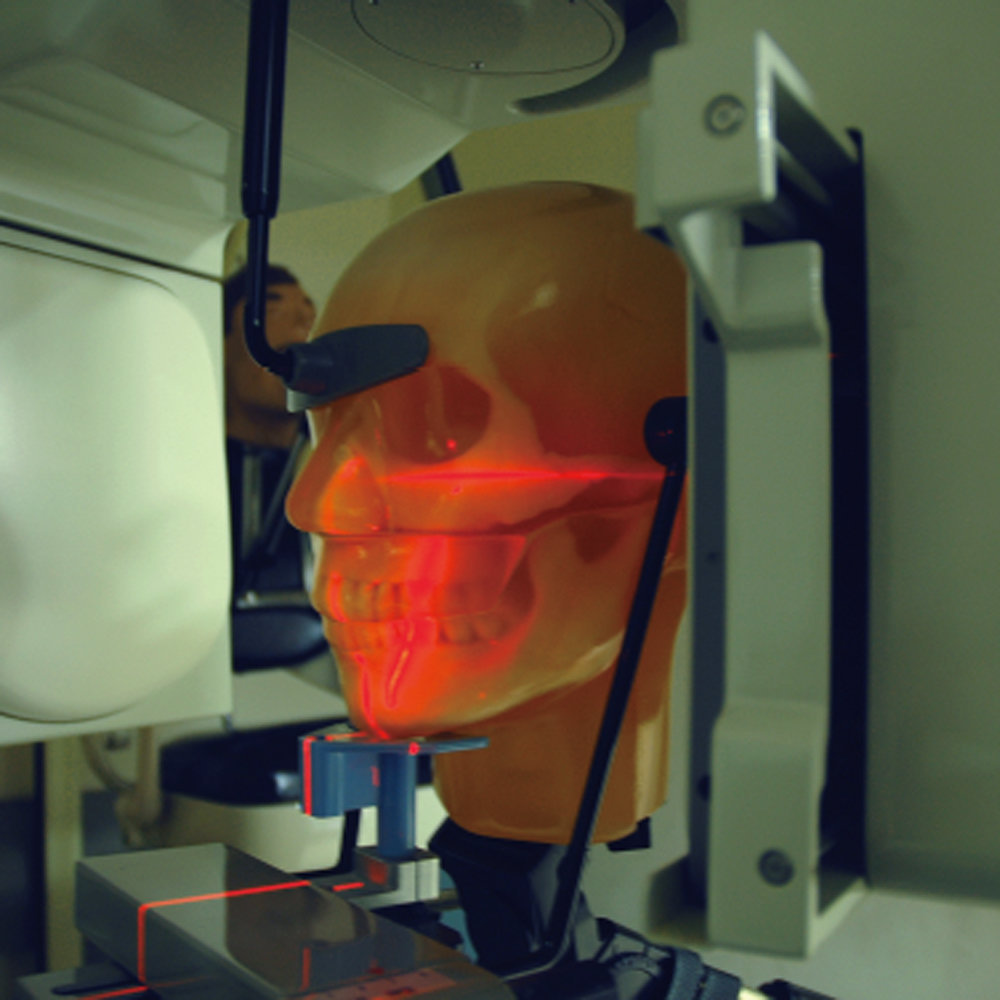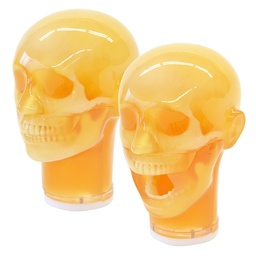




| Features | 1. Each hard tissue (enamel, dentin, cortical bone and cancellous bone) has particular HU number and X-ray absorption rate, each tooth has three-layer structure of enamel, dentin and pulp cavity. 2. Jaws and tongue are detachable to allow access to the oral cavity, pharyngeal cavity and maxillary sinus. Sensors, simulated lesions, or residue can be set in these cavities. 3. Carotid arteries are prepared as lumens to accommodate simulated calcifications. |
|---|---|
| Training skills / Applications | Tooth jaw X-ray training and quality assurance technique: Panoramic X-ray, Intraoral X-ray, Dental CT, Cephalogram |
| Case / Pathology | Change of x-ray transmission due to maxillary sinusitis, calcification of carotid artery, residue of food and drink to oral and nasal cavity due to dysphasia. (simulated food and drink not included) |
| Set includes | Main head unit / Upper jaw / Lower jaw* / Tongue / Tripod / 1 set of sample X-ray data / Storage case / Instruction manual / Fixation base (including screws) / *Two-way set includes two types of lower jaws |
| Size (approx.) | W20xD21xH29cm / W7.9xD8.3xH11.4in |
| Packing size (approx.) | W66 x D54 x H34cm / W26.0 x D21.3 x H13.4in |
| Weight (approx.) | 4.8kg /10.6lb |
| Optional parts | 41301-200-01 Implant |
| Production & Development Supervision | Akitoshi Katsumata, D.D. S, Ph. D Professor Asahi University, School of Dentistry |
| Update | July 20, 2020 |

To install this Web App in your iPhone/iPad press ![]() and then Add to Home Screen.
and then Add to Home Screen.







